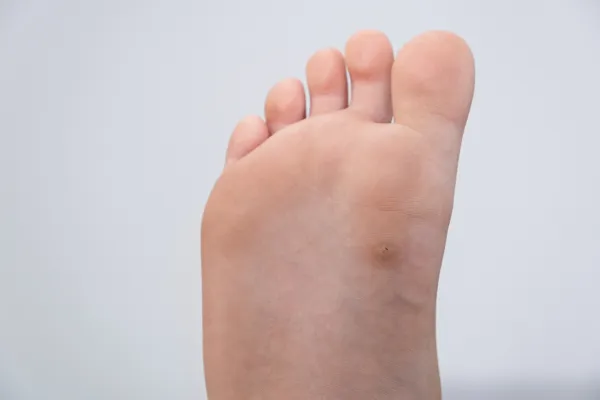
What Causes Verrucas—And How to Stop Them Spreading
Verrucas can be a real nuisance. They’re small, they’re stubborn, and let’s be honest—they’re not very pleasant to look at. But what actually causes them? And more importantly, how can you stop them from spreading to others (or even to other parts of your own foot)?
At our foot clinic in Bishopbriggs, we see verrucas all the time—especially in kids and active adults. Here’s what you need to know.
First Things First: What Is a Verruca?
A verruca is just another name for a plantar wart. They pop up on the bottom of your foot—usually around the heel or ball of the foot where there’s more pressure.
They’re caused by a virus called HPV (human papillomavirus). Don’t worry, it’s not the same kind of HPV you hear about in other health discussions. But yes, it’s still a virus, and like most viruses, it spreads from person to person.
So, How Do You Catch a Verruca?
You pick up the virus when your bare feet come into contact with it—usually in warm, damp places like:
Changing rooms
Swimming pool areas
Gym showers
Communal bathrooms
If you’ve got even the tiniest cut or crack in your skin, the virus can sneak in. You might not notice anything for weeks, since verrucas can take a while to appear.
Why Do Verrucas Spread So Easily?
Verrucas love warm, moist environments. If one person in the house has one, it’s surprisingly easy for it to spread:
From foot to foot (especially if you scratch or pick at it)
From one person to another (sharing socks, towels or walking barefoot at home)
Even from one area of the same foot to another
That’s why it’s so important to act quickly and protect others around you.
How to Stop Verrucas from Spreading
Here are a few simple steps you can take to protect yourself and your family:
Keep Feet Covered
Wear flip-flops or shower shoes in shared spaces—especially pools, gyms, and hotel bathrooms.
Don’t Share Footwear or Towels
This includes socks, slippers, nail clippers—anything that touches your feet.
Cover the Verruca
If you already have one, keep it covered with a plaster or verruca pad, especially in public places.
Don’t Pick at It
It’s tempting, but touching it with your fingers (then touching other things) is one of the fastest ways to spread the virus.
Keep Feet Dry
Dry your feet well after washing, especially between the toes. Verrucas thrive in damp conditions.
When to See a Podiatrist
Sometimes verrucas clear up on their own. But if you’ve had one for more than a couple of months—or it’s painful, spreading, or just won’t budge—it’s time to get help.
At our private podiatry clinic in Bishopbriggs, we offer a range of treatments that are more effective than over-the-counter options. From cryotherapy (freezing) to advanced laser therapy, we’ll help you find the right option for your foot and lifestyle.
Final Thoughts
Verrucas are common—but they’re also totally treatable. The key is to act early and take a few simple steps to stop the virus from spreading.
If you’re dealing with a stubborn verruca, or just want to make sure it doesn’t spread through the household, our team at The Springfield Clinic is here to help.
👉 Book an appointment today with a friendly podiatrist in Bishopbriggs and take the first step toward clear, comfortable feet.



